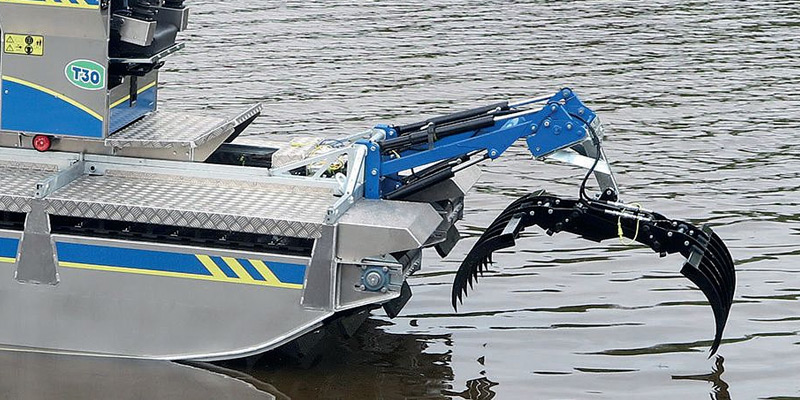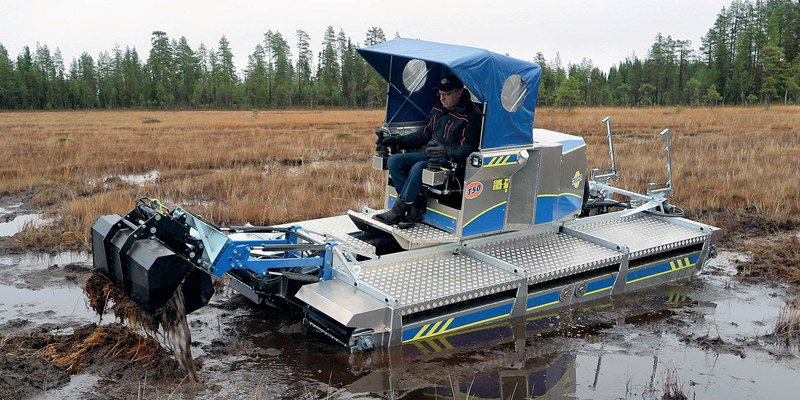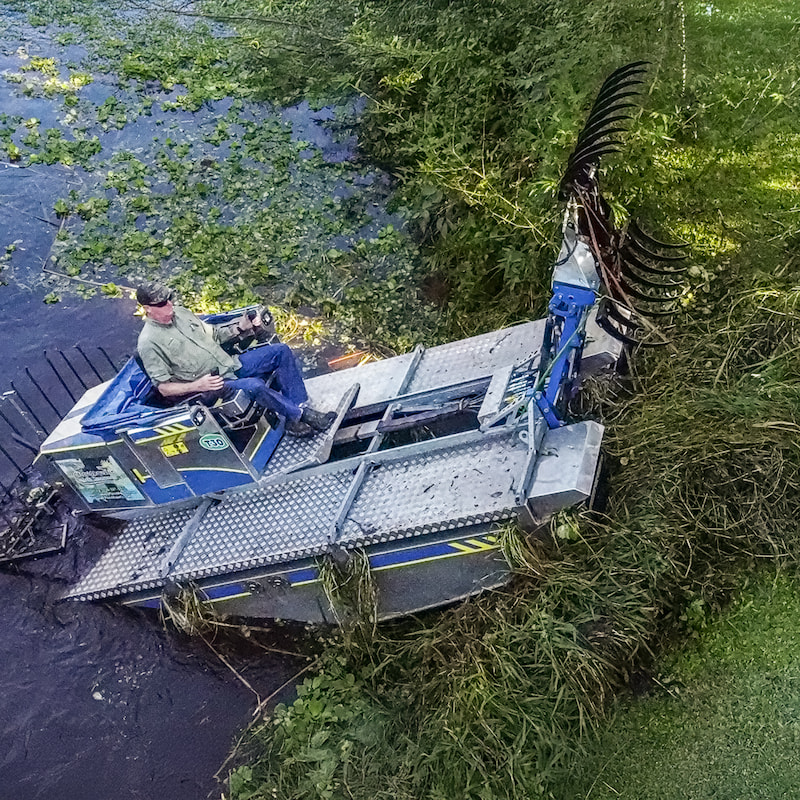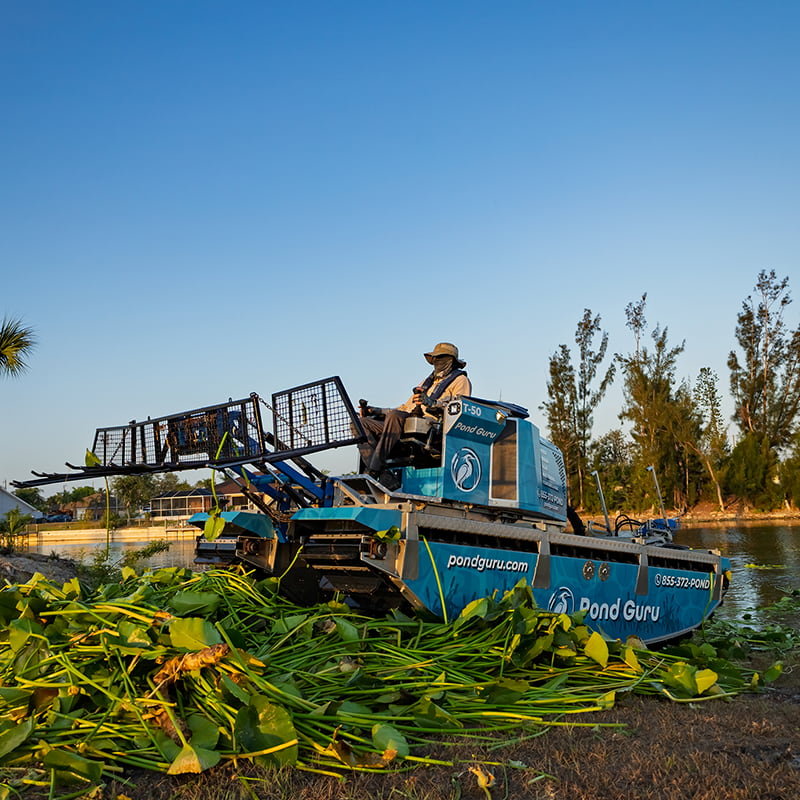Aquatic weeds can quickly overtake lakes, ponds, and waterways, reducing water quality, blocking navigation, and disrupting ecosystems. Truxor amphibious machines are built to handle these challenges with specialized attachments designed for different stages of vegetation management. But when it comes to weed removal, which option is right for you—harvesting or hydro-raking?
It depends on whether you’re dealing with existing mature weeds above the waterline or if you need to target root systems and sediment buildup below the surface.
Harvesting for Existing Weeds
Harvesting is ideal for cutting and removing mature, overgrown aquatic vegetation like hydrilla, duckweed, or water lilies. This method is used when plants have already taken over and are blocking boat access, swimming areas, or general water use.
The Truxor Harvester uses a cutting attachment, such as a Doro Cutter, to sever weeds at their base. Once cut, the vegetation is gathered, lifted out of the water, and disposed of properly. This improves navigability, restores open water, and enhances the appearance of ponds and lakes.
Attachments Used:
These attachments are efficient, powerful, and available in different widths to match the size and scope of your project.

Hydrotilling (Hydro-Raking) for Root Systems and Preparation
While harvesting removes what you see above water, hydrotilling (also called hydro-raking) goes deeper. This method is designed to:
- Rake and disturb the pond or lake bottom
- Pull up emergent plants (like cattails and bulrushes) by their roots
- Collect accumulated organic sediment (detritus)
By tackling the source of weed growth, hydrotilling helps prevent regrowth, making it a more long-term solution.
Using a hydro-raking attachment, the Truxor digs into the sediment and uproots vegetation along with their root systems. This not only clears invasive species but also prepares areas for replanting or natural regeneration.
Attachments Used:
This attachment provides both raking and collection capabilities, making it an excellent choice for complete bottom management.

The Truxor’s versatility makes it one of the most effective aquatic weed harvesters. Whether you’re tackling a one-time overgrowth or planning long-term ecological restoration, selecting the right attachment—such as the Doro Cutter for harvesting or the DoroGrip Bucket & Rake for hydro-raking—ensures the best results.
Ready to find the right Truxor solution for your project? Call Truxor Harvester USA at (239) 323-6444 or message us online to learn more about Truxor Harvester and Truxor Harvester attachments.
FAQ
1. Which Truxor attachment is best for cutting aquatic weeds?
The Doro Cutter ESM20 is ideal for shallow water vegetation, offering double-action Busati knives and a stone release system for efficient cutting. For denser growth, the ESM30 and ESM50 provide enhanced power and collection capabilities. Explore more on our truxor harvester attachments.
2. Can Truxor attachments assist in shoreline restoration?
Yes. Attachments like the Doro Pump and Doro Digger facilitate sediment removal and excavation, which are essential parts of effective lake management. These tools help restore water flow, improve oxygen levels, and maintain healthy aquatic ecosystems.
3. Are Truxor attachments compatible with all harvester models?
Truxor attachments are designed for seamless integration with models like the T30 and T50. Their quick bracket system ensures easy swapping between tools. Discover the right model for your needs on our sales page.
4. How do Truxor attachments contribute to lake management?
Tools like the Reed Rake and High Tip Rake are designed for collecting and transporting debris, aiding in shoreline cleanup and restoration. Learn about our comprehensive solutions on the about truxor harvesters page.



